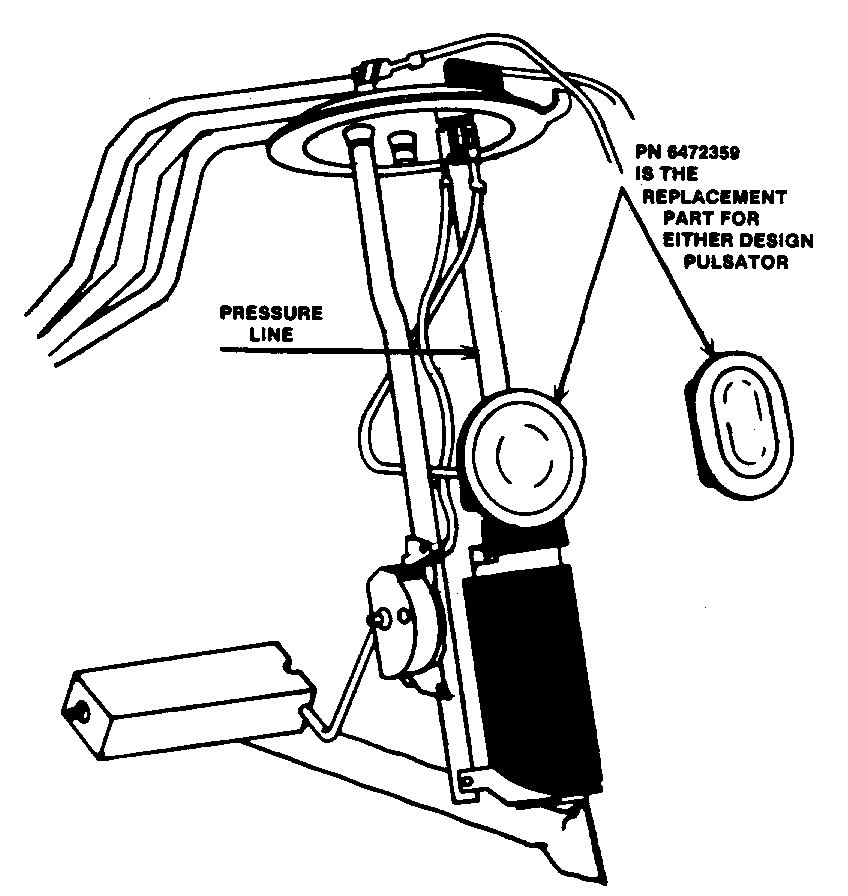HARD OR NO START AND/OR DOES NOT MAINTAIN FUEL PRESSURE

VEHICLES AFFECTED: 1984 and 1985 Vehicles Equipped With Port Fuel Injected Engines ------------------------------------
Some 1984 and 1985 vehicles equipped with Port Fuel Injected Engines, may experience extended engine cranking time, poor driveability, won't stay running, and/or may not maintain fuel rail pressure.
Chart A-7 in section 6E3 of the Service Manual states that, while performing the Fuel System Diagnosis procedure, if the fuel rail pressure does not hold, but will maintain pressure while pinching the pressure line flex hose, the problem is either a leaking pump coupling hose or a faulty in-tank pump. However, the problem could also be a leaking fuel sender pulsator (see illustration).
A simple test to determine which component is causing a pressure line leak down can be performed in the following manner:
1. Remove the sending unit assembly from tank.
2. With the fuel pick-up sock still attached, submerge the sender assembly in clean water far enough to completely cover the fuel pump and pulsator.
3. Apply regulated air pressure (not to exceed 138 kpa (20 psi) to the pressure line of the sending unit assembly.
4. Watch for air escaping from around the pulsator or the end of the pump to determine which component is leaking.
5. Replace parts as necessary and recheck.
NOTICE: DO NOT LEAVE SENDER SUBMERGED IN WATER FOR EXTENDED PERIODS OF TIME; AND BLOW DRY IMMEDIATELY UPON REMOVAL.
The new part number for the pulsator is 6472359 and is available through the Parts Department.

General Motors bulletins are intended for use by professional technicians, not a "do-it-yourselfer". They are written to inform those technicians of conditions that may occur on some vehicles, or to provide information that could assist in the proper service of a vehicle. Properly trained technicians have the equipment, tools, safety instructions and know-how to do a job properly and safely. If a condition is described, do not assume that the bulletin applies to your vehicle, or that your vehicle will have that condition. See a General Motors dealer servicing your brand of General Motors vehicle for information on whether your vehicle may benefit from the information.
